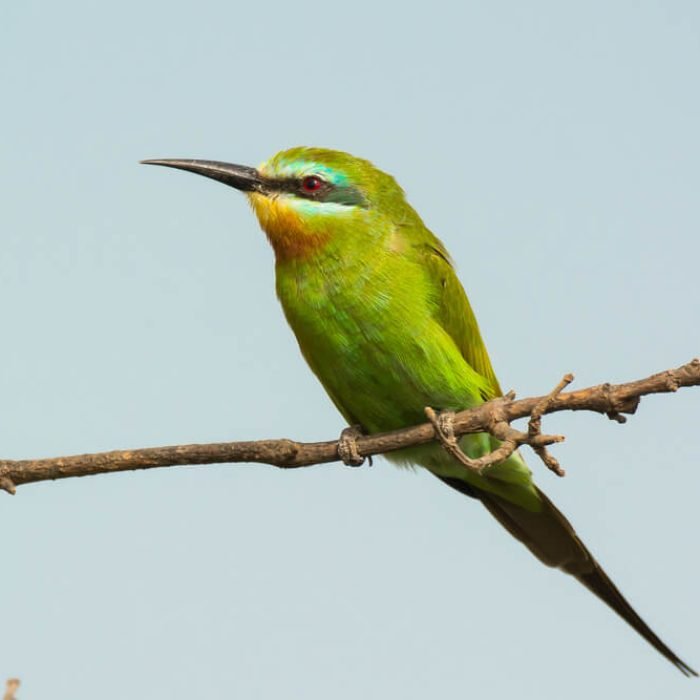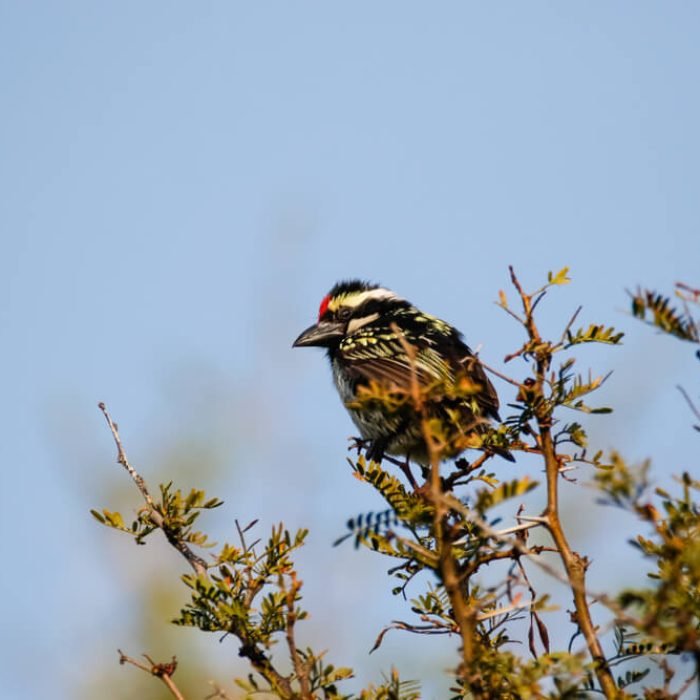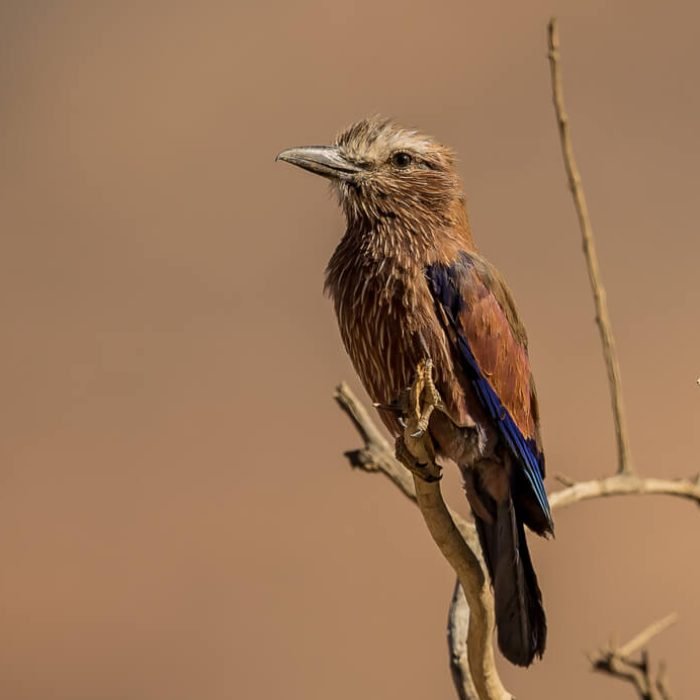Blue-cheeked bee-eater
- Merops persicus
- IUCN Status: Least Concern
- Trend: increasing

General Information
The blue-cheeked bee-eater (Merops persicus) is a near passerine bird in the bee-eater family, Meropidae.
The genus name Merops is Ancient Greek for “bee-eater”, and persicus is Latin for “Persian”.
Description
This species, like other bee-eaters, is a richly coloured, slender bird. It is predominantly green; its face has blue sides with a black eye stripe, and a yellow and brown throat; the beak is black. Sexes are mostly alike but the tail-streamers of the female are shorter.
The call sounds ‘flatter’ and less ‘fluty’ than the European bee-eater.
Ecology and Behaviour
It is generally strongly migratory, wintering in tropical Africa, although some populations breed and live year-round in the Sahel. This species occurs as a rare vagrant north of its breeding range, with most vagrants occurring in Italy and Greece. Recently (2024) also recorded in Sri Lanka for the first time.
Diet
As the name suggests, bee-eaters predominantly eat insects, especially bees, wasps and hornets, which are caught in the air by sorties from an open perch.
However, this species probably takes more dragonflies than any other food item. Its preferred hunting perch is telephone wires if available.
Reproduction
This is a bird which breeds in sub-tropical semi-desert with a few trees, such as acacia. It winters in open woodland or grassland.
Blue-cheeked bee-eaters may nest solitarily or in loose colonies of up to ten birds. They may also nest in colonies with European bee-eaters. The nests are located in sandy banks, embankments, low cliffs or on the shore of the Caspian Sea. They make a relatively long tunnel of 1 to 3 m in length in which the four to eight (usually six or seven), spherical white eggs are laid. Both the male and the female take care of the eggs, although the female alone incubates them at night. Incubation takes 23–26 days.
Conservation
It is listed by the International Union for Conservation of Nature (IUCN) as, ” Least Concern “.
References
Share:
- Kingdom: Animalia
- Phylum: Chordata
- Class: Aves
- Order: Coraciiformes
- Family: Meropidae
- Genus: Merops
- Tail Length: up to 7 cm














